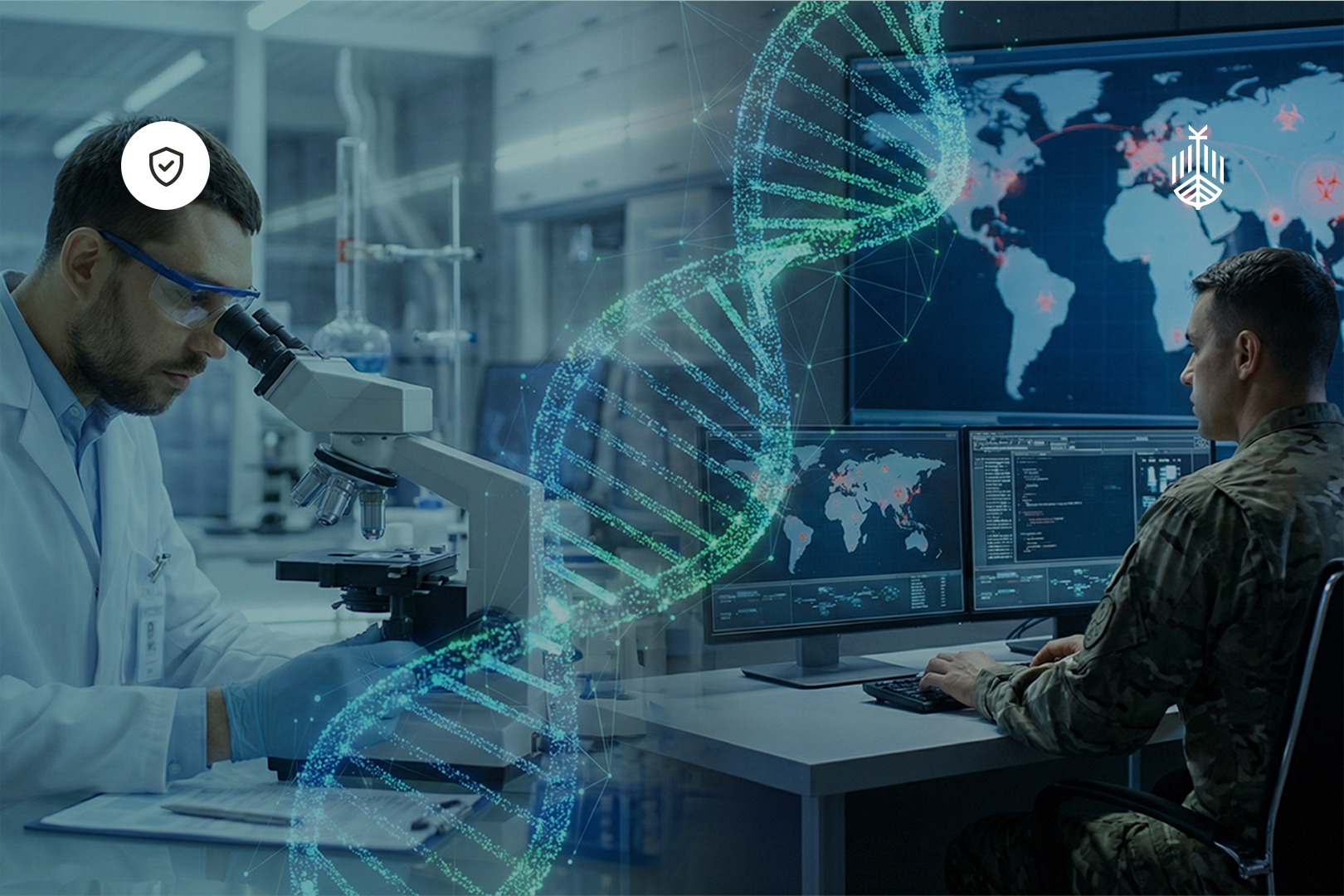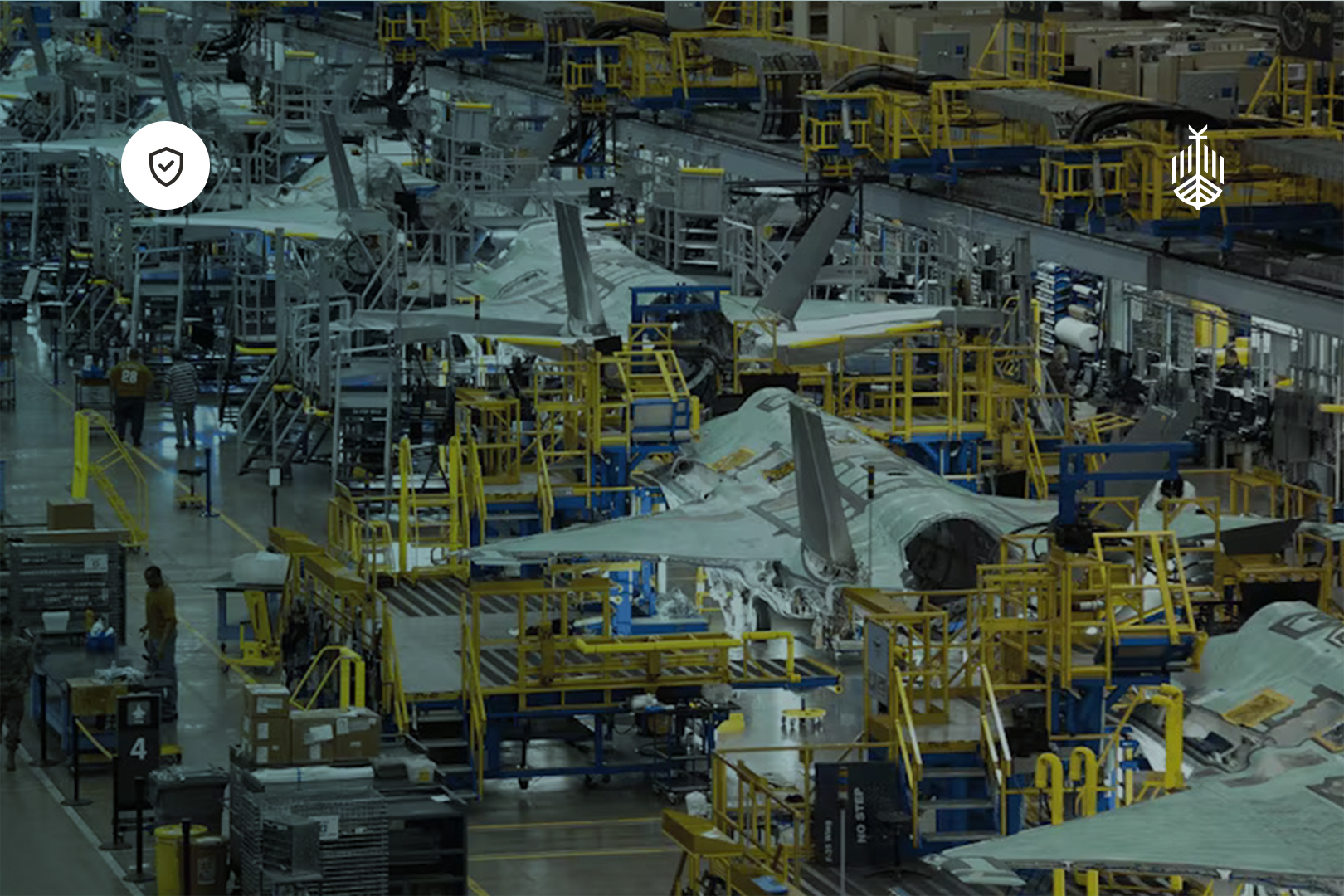Competitive advantage now unfolds in milliseconds. Artificial intelligence has shifted from future promise to present-day infrastructure. Multimodal models such as GPT-4o process text, images and voice simultaneously, enabling capabilities that felt impossible only a few years ago.
The adoption curve tells its own story. 75% of SMEs are experimenting with AI, yet those that have fully committed are already pulling ahead: 91% report revenue growth. In social-media marketing, 76% firms plan to boost AI spending within the next 18 months. The message is clear: experiment or execute, but standing still means falling behind.
Even Disruptors Are Being Disrupted
Scaleups that transformed industries through platforms, automation, and data now face AI-native challengers operating at a different scale, iterating faster, personalising deeper, and scaling at near-zero cost.
The lesson is stark: embed AI across every operation or risk obsolescence. The stakes will only rise with agentic AI, autonomous systems that act independently. Salesforce's Marc Benioff aims to deploy one billion such agents by 2026, signalling how radically business operations will change.
Why AI Matters for SMEs and Scaleups
- Accessibility: Cloud APIs and no-code tools have eliminated barriers, and six in ten adopters rolled out their first use-case without outside consultants. Budgets are no longer blockers: the average business spent about US $1.5k on AI tools in Q1 2024, up 138% year-over-year, achieving implementations in days, not months.
- Competitive Edge: AI automation frees teams for strategic work. Companies report average efficiency gains of 33% with 91% of AI-adopting SMEs reporting that it has already driven revenue growth for their business.
- Immediate & Long-Term ROI: Quick wins like invoice processing show payback in weeks. 92% of early AI adopters see ROI, while advanced projects compound gains over time.
- FOMO Factor: Markets move fast: 75% of SMEs are experimenting with AI, and 83% of growing SMEs have it in production. Momentum favours early movers.
- Agility Bonus: Smaller organisations pivot faster than corporates weighed down by governance layers, capturing first-mover advantage.
A New Era in Product Development and Operations
AI isn't just another tech tool; it's a fundamental shift in how products are developed, delivered, and optimised. Many scaleups (especially SaaS companies) that built their success on platform efficiencies or automation are now seeing AI-native challengers redefine product development itself.
To stay ahead, businesses must embed AI into every stage of the product lifecycle, from generative design that converts text prompts into prototypes to edge-based computer vision that inspects quality in real time. AI is transforming from an enhancement into a core capability, making every stage intelligent and adaptive.
1. AI in Action: Transforming Industries
AI is reshaping every sector by automating workflows, enhancing decision-making, and sparking new business models. Whether you’re optimising supply chains, detecting anomalies, or enhancing customer experiences, AI brings clear value to organisations of all sizes.
Defence & National Security
AI enables SMEs to build sophisticated defence capabilities previously requiring massive resources. Portugal's TEKEVER achieved €1.2 billion valuation by transforming standard drones into intelligent surveillance systems, while Windward's algorithms detect sanctions-evading vessels missed by traditional monitoring.
With cyber threats targeting over 50% of SMEs, AI-powered defence has become essential for survival. NATO DIANA and the European Defence Fund now specifically fund SMEs whose AI innovations outpace traditional contractors.
Key Uses: Autonomous drone systems, maritime threat detection, cyber defense automation, critical infrastructure monitoring, sanctions compliance, identity verification.
No matter the industry, AI offers practical tools for tackling common bottlenecks, reducing costs, and fueling growth. With a clear, strategic approach, smaller organisations can use AI to transform core operations and gain a competitive edge.
Finance, Insurance & Cybersecurity
AI transforms risk management through real-time fraud detection, pattern analysis, and threat prevention. Financial institutions flag suspicious transactions in milliseconds, while insurers leverage AI-powered underwriting for personalised policies and automated claims processing.
For cybersecurity, AI monitors network traffic, detects anomalies, and prevents breaches before they occur - critical protection given that SMEs face 54% of recorded cyber attacks. With average breach costs of $3.31 million for smaller companies, AI adoption delivers substantial savings of $1.76 million per incident compared to non-AI approaches.
Key Uses: Fraud detection, algorithmic trading, risk analytics, automated claims processing, AI threat detection, anomaly monitoring.
Retail & Marketing
AI personalisation drives demand prediction, content customisation, and enhanced customer journeys. Retailers use AI inventory forecasting to eliminate overstock and stockouts, while e-commerce platforms boost sales through dynamic pricing and intelligent recommendations.
Marketing teams leverage AI for audience segmentation, refined ad targeting, and improved engagement through predictive analytics, making marketing and sales the top AI use cases for SMEs.
Key Uses: Demand forecasting, AI recommendations, dynamic pricing, audience segmentation, ad personalisation, sentiment analysis.
Manufacturing & Energy
AI delivers efficiency gains, predictive maintenance, and cost savings across industrial sectors. Smart factories employ computer vision for real-time quality control, while predictive maintenance prevents costly downtime. Energy companies optimise grid balancing, integrate renewables, and enhance smart metering capabilities.
Sandvik's Manufacturing Copilot demonstrates AI's impact, achieving 30% productivity improvements while strengthening customer support.
Key Uses: Predictive maintenance, real-time quality control, production planning, grid optimisation, smart metering, energy savings.
Transport & Logistics
AI revolutionises route optimisation, fleet management, and warehouse automation. Logistics firms reduce fuel costs and delivery times using AI-driven traffic and weather predictions, while automated warehouses deploy AI-powered robots for inventory management.
Maritime security showcases AI's critical role, with Windward's specialists reporting GPS spoofing incidents affecting 970 ships daily in key shipping lanes, highlighting AI's importance for supply chain protection.
Key Uses: Dynamic dispatch, delivery time prediction, fleet automation, warehouse robotics, predictive logistics.
Healthcare & Education
AI accelerates diagnostics, improves patient care, and enables personalised learning. Healthcare applications include early disease detection, surgical assistance, and remote monitoring. Educational platforms use AI for adaptive learning, progress assessment, and real-time feedback.
Key Uses: Early diagnostics, AI-assisted surgery, patient risk prediction, adaptive learning, automated grading, personalised tutoring.
Agriculture
AI-driven drones, IoT sensors, and machine learning optimise crop yields while reducing waste and improving sustainability. Farmers identify pests, monitor soil health, and apply fertilisers with precision.
Key Uses: Precision farming, smart irrigation, pest detection, automated crop monitoring, yield forecasting.
2. Unlocking Potential Through Innovative AI Features
As AI becomes integral to everyday technology, it enables capabilities once considered science fiction. Today, even smaller organisations can access these tools thanks to user-friendly platforms and cloud-based services that fit within modest budgets.
Intelligent Automation
- Efficiency & Productivity: AI chatbots and robotic process automation (RPA) still remove repetitive tasks, data entry, invoice coding, tier‑1 customer enquiries, freeing smaller teams for strategic work. 2025‑era autonomous agents (e.g., Salesforce Agentforce) now link dozens of steps (classify email ➜ draft reply ➜ schedule follow‑up), cutting human handling time by up to 70% in early pilots.
- Supply Chain Optimisation: AI analyses logistics data to optimise delivery routes, forecast inventory needs, and trim shipping delays. SMEs can now stream live AIS vessel data into GPT‑4o dashboards to detect shadow‑fleet disruptions before they impact stock.
Why It Matters for SMEs and Scaleups: Automation reduces cost, speeds output, and scales operations, without extra headcount.
Personalised Customer Experiences
- Dynamic Personalisation: Generative recommendation engines tailor content in real time. E‑commerce sites using GPT‑powered curators are seeing double‑digit conversion lifts.
- Emotion Recognition: Advanced AI analyses facial expressions and vocal tone; mental‑health start‑ups employ it to build empathetic chatbots or flag user distress in tele‑sessions.
Why It Matters for SMEs and Scaleups: Personalisation builds loyalty and boosts conversions; crucial when competing with larger brands.

Predictive Insights
- Anticipating Needs: LLM‑augmented analytics forecast consumer behaviour, cash flow, or market trends; letting retailers stock trending items in advance and slashing markdowns.
- Risk & Resilience: Logistics firms fuse internal ERP data with satellite and AIS feeds, allowing AI to flag potential cable cuts or sanctioned “dark fleet” vessels that could delay shipments.
Why It Matters for SMEs and Scaleups: Early insight keeps businesses ahead of swings in demand and emerging supply risks.

Generative AI
- Content Creation: GPT‑4o, Gemini or Claude craft ad copy, product descriptions and code snippets in seconds; accelerating marketing and engineering without extra staff.
- Product & UX Prototyping: Text‑to‑design tools turn prompts into wireframes or packaging comps, enabling rapid customer testing without costly development cycles.
Why It Matters for SMEs and Scaleups: Gen‑AI removes creative bottlenecks, helping smaller firms match bigger rivals on speed and innovation.

Advanced Capabilities with Computer Vision and IoT
- Computer Vision: Beyond self‑driving cars, vision AI spots defects on manufacturing lines, counts footfall in stores and flags unusual in‑store behaviour.
- Internet of Things (IoT): Connected devices learn user habits and monitor assets; Denmark’s AI‑equipped Saildrones now patrol Baltic subsea routes, proving how low‑cost edge devices can safeguard infrastructure for months at sea.
Why It Matters for SMEs and Scaleups: These technologies open new product lines; subscription insights, AI‑driven quality assurance, or micro‑satellite monitoring services.

Enhanced Interaction Through Natural Interfaces
- Voice Assistants: AI-powered voice chatbots and virtual assistants improve customer engagement and self-service. SMEs can integrate these tools into websites or apps for instant hands-free support.
- Augmented Reality (AR): AR overlays digital information onto real-world environments. Online shoppers can "try on" products virtually, while interior design startups can let customers visualise furniture placement in their homes.
Why It Matters for SMEs and Scaleups: Natural interfaces lower friction for users, creating more engaging and interactive customer experiences.

Edge AI
- Real-Time Analytics: AI processes data locally on smart cameras, phones, and IoT sensors, delivering instant insights without cloud dependency. Small manufacturers spot product defects in real time, retailers analyse foot traffic and detect suspicious behaviour, and food producers catch packaging errors immediately.
- Offline Functionality: Edge AI keeps working in low‑connectivity zones. New lightweight intrusion‑detection models protect smart‑grid equipment and retail IoT devices at the edge, satisfying both uptime and data‑privacy mandates.
Why It Matters for SMEs and Scaleups: Edge solutions cut latency, cloud spend and privacy risk; making AI adoption affordable via existing smartphones and cameras.
3. Real-World Success Stories
Blue River Technology (Agritech Scaleup)

Blue River Technology is a California-based agritech startup founded in 2011 and acquired by John Deere in 2017. It leverages computer vision and machine learning to help farmers manage crops more efficiently and sustainably.
🔍 Problem/Opportunity: Agriculture relies heavily on broad pesticide application, which is expensive and environmentally damaging. Farmers needed a targeted approach to differentiate crops from weeds, reducing herbicide use and operational costs.
⚙ AI-Driven Solution:
- Computer Vision Systems: Cameras mounted on farming equipment capture high-resolution field images in real time.
- “See & Spray” Technology: AI algorithms identify individual weeds versus crops and direct sprayers to apply herbicide only where needed, drastically reducing waste.
📊 Measurable Impact:
- Up to 90% Reduction in Herbicide Use: AI-driven precision has cut chemical usage and costs while minimising environmental impact.
- Higher Crop Yields: By preserving beneficial plants and reducing chemical overuse, farmers maintain healthier soils, leading to more sustainable and productive operations.
✅ Key Takeaway: AI-driven precision agriculture enables cost savings, sustainability, and higher efficiency, showcasing how even traditional industries can benefit from AI innovation.
Grind (UK Café chain)

Grind is a London-based coffee brand founded in 2011 by David Abrahamovitch. Originally a single café, it has grown into a chain of 14 locations, an online retail business, and a thriving subscription service. To manage its rapid growth and operational complexity, Grind integrated AI into its customer service, marketing, and reporting processes, enhancing efficiency while keeping staffing costs under control.
🔍 Challenge: Grind faced increasing customer enquiries, operational inefficiencies, and the challenge of managing marketing content at scale. As a growing SME, it needed to improve productivity without significantly expanding its team or budget.
⚙ AI-Driven Solution:
- AI-Powered Customer Service: Automated chatbots handle 2,000+ daily customer enquiries, resolving common questions instantly and freeing up staff for more complex support.
- Automated Marketing Content: AI generates product descriptions and ad creatives, enabling the team to rapidly create and test new marketing campaigns.
- AI-Driven Business Intelligence: AI compiles and analyses trading performance reports, reducing manual effort and improving decision-making speed.
📊 Measurable Impact:
- 20% productivity increase: equivalent to gaining an extra full-time employee for every five staff members.
- Faster response times: customer enquiries handled instantly instead of requiring manual intervention.
- More efficient reporting: business insights generated automatically, allowing leadership to focus on strategic growth.
✅ Key Takeaway: Grind’s use of AI demonstrates how SMEs can boost efficiency, reduce workload, and scale without increasing costs, making AI a practical and impactful tool for small and growing businesses.
4. The Competitive Edge: Why AI is No Longer Optional
AI adoption has moved from advantage to basic requirement. Recent surveys show that 91% of AI-enabled SMEs report revenue growth, and 75% of SMEs are at least experimenting with at least one AI tool. Customers now expect instant answers, predictive recommendations and personalised support whenever they engage with a brand.
Even Disruptors Can Fall Behind
Scale‑ups that once reshaped markets with data and automation now face competition from born‑AI firms that release updates daily, operate at near‑zero marginal cost and personalise every experience by default. A company that pauses its AI investment can look outdated within a single product cycle.
Market Dynamics and Customer Expectations
- Staying Ahead: Generative models, autonomous agents and edge intelligence improve with every quarter. Competitors that adopt each new wave quickly will widen capability gaps, while laggards risk being left behind.
- Elevated Customer Expectations: Features that seemed premium in 2023, real‑time chat summaries, voice ordering, next‑hour delivery promises, are baseline in 2025. Companies unable to match these experiences face churn even if their prices remain competitive.
Business Growth and New Opportunities
- Revenue Expansion: AI opens subscription analytics, outcome‑based pricing and hyper‑personalised digital products that were impossible two years ago.
- Operational Excellence: Self‑optimising supply chains and automated compliance checks cut overheads, letting smaller companies undercut larger rivals or reinvest in growth.
Risks of Falling Behind
- Innovation Gap: Months without an AI roadmap leave data unused, models untrained and teams stuck in manual workflows.
- Talent Attraction: Skilled employees want to work with modern tools; where those tools are missing they gravitate to more progressive employers.
5. Take the Next Step with AI
AI’s momentum shows no sign of slowing. Most small firms now launch their first AI workflow without outside consultants and report payback inside three months. The winning approach is to link every experiment to a clear business goal, measure honestly, then expand only after value is proven.
- Anchor on a business objective: Choose one pain point or growth target, for example reducing support cost per ticket by 30%.
- Select a low‑effort, high‑impact use case: Map candidate tasks on an impact‑versus‑effort grid and pick the square that promises quick, visible benefit.
- Check data and compliance together: Confirm that the small, structured dataset you plan to use is complete, accurate and permitted for AI training. Draft a one‑page model card that states purpose, inputs and hand‑off rules.
- Pilot against a locked baseline: Run a proof of concept for thirty days, tracking one or two metrics such as cycle time or net promoter score versus the pre‑AI figures.
- Upskill and embed: Provide frontline staff with prompt‑craft tips and appoint an internal AI steward to review output quality and escalate edge cases.
- Iterate or expand: If the pilot meets its metric gate, integrate it into daily workflow and move to the next use case; if not, adjust data, prompts or model and retest.
Summary
Artificial intelligence is now the operating system of growth. SMEs and scale‑ups that start small, measure relentlessly and scale responsibly will not just keep pace, they’ll leapfrog incumbents still wrestling with legacy systems.
Footnotes with Citations
¹ Capterra – "GenAI for Social Content Survey," May 2024. Survey of 1,680 social-media marketers: 76% plan to increase spending on generative-AI tools within 18 months.
² Salesforce Research – "SMBs with AI Adoption See Stronger Revenue Growth," Dec 2024. Among ≈2,000 SMB leaders: 91% of AI adopters report revenue growth; 75% are experimenting; 83% of growing SMBs run AI in production.
³ Salesforce CEO Marc Benioff, various keynotes and earnings calls throughout 2024-2025. CEO's goal of one billion agents by fiscal year 2026.
⁴ Ramp – "Q1 2024 Business Spending Report," May 2024. The average business spent $1.5k on AI tools in Q1 2024, an increase of 138% year over year.
⁵ Verizon – "2024 Data Breach Investigations Report — SMB Snapshot," May 2024. SMEs account for 54% of breaches where organisation size was recorded.
⁶ IBM Security – "Cost of a Data Breach Report 2023," Jul 2023. Average breach cost for <500-employee firms: US $3.31m; extensive AI/automation cuts that by US $1.76m.
⁷ Windward – "Maritime AI in 2024 & Beyond," Jan 2024, plus incident update Jun 2025. GPS spoofing/jamming peaks affect ≈970 vessels per day in Gulf/Strait of Hormuz.
⁸ Microsoft Customer Stories – "Sandvik revolutionises manufacturing with Microsoft AI," Apr 2024. Manufacturing Copilot saves 20-30% of staff time on routine tasks.
⁹ Blue River Technology / John Deere – "See & Spray Ultimate" technical brief, 2023-24. Field trials show up to 90% reduction in herbicide use.
¹⁰ Google Blog – "How the UK's coolest coffee brand is using AI to brew up success," Nov 2024. Grind Coffee reports a 20% productivity boost after deploying Gen-AI.
¹¹ Various sources including TechCrunch (November 2024) and company announcements (May 2025). TEKEVER achieved a valuation of €1.2 billion after raising funding from investors including the NATO Innovation Fund.
¹² IDC Europe – "Artificial Intelligence Spending Guide," Nov 2023. Banking, financial-services and healthcare remain the top three AI-investment verticals in Europe.














